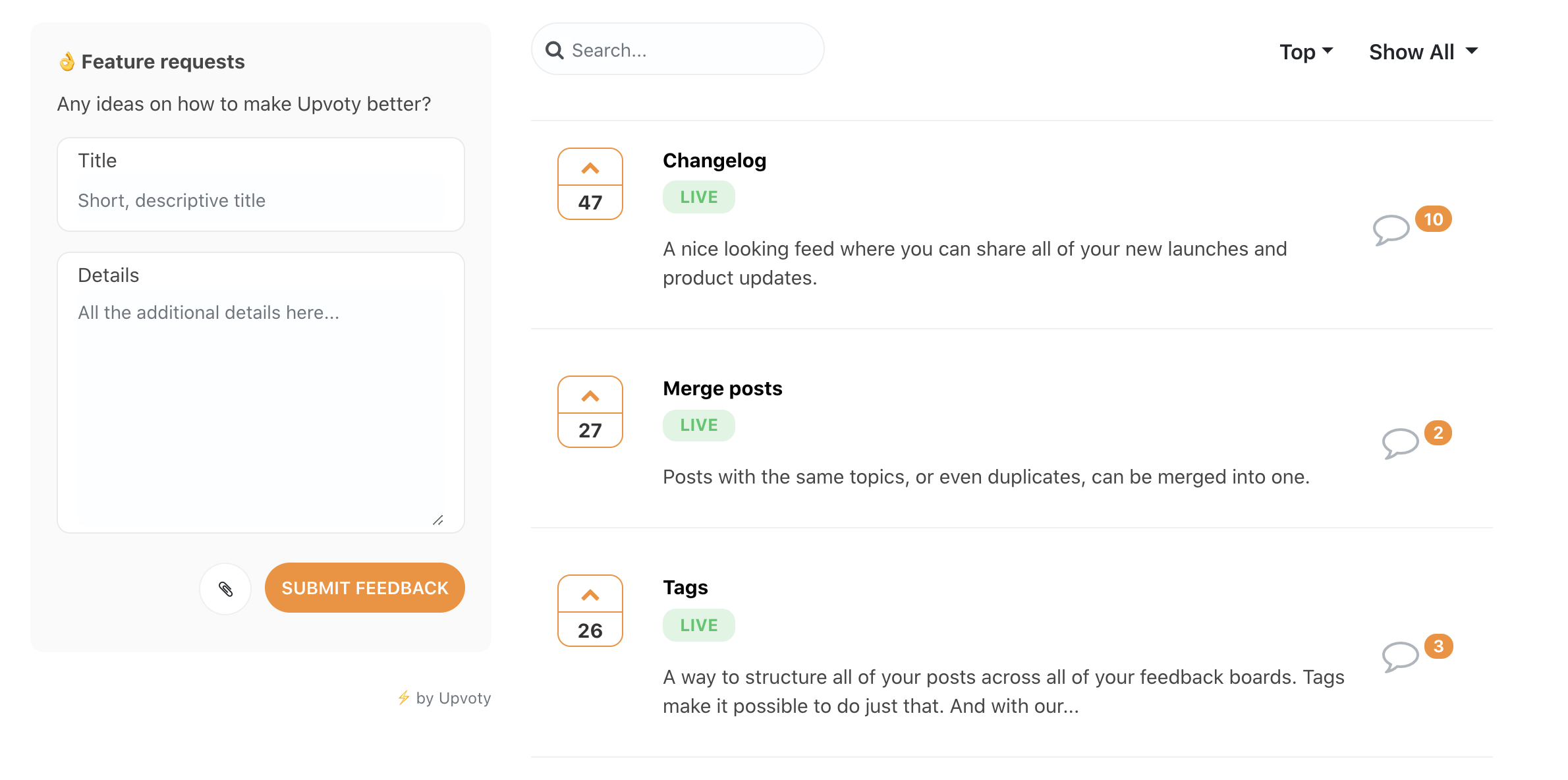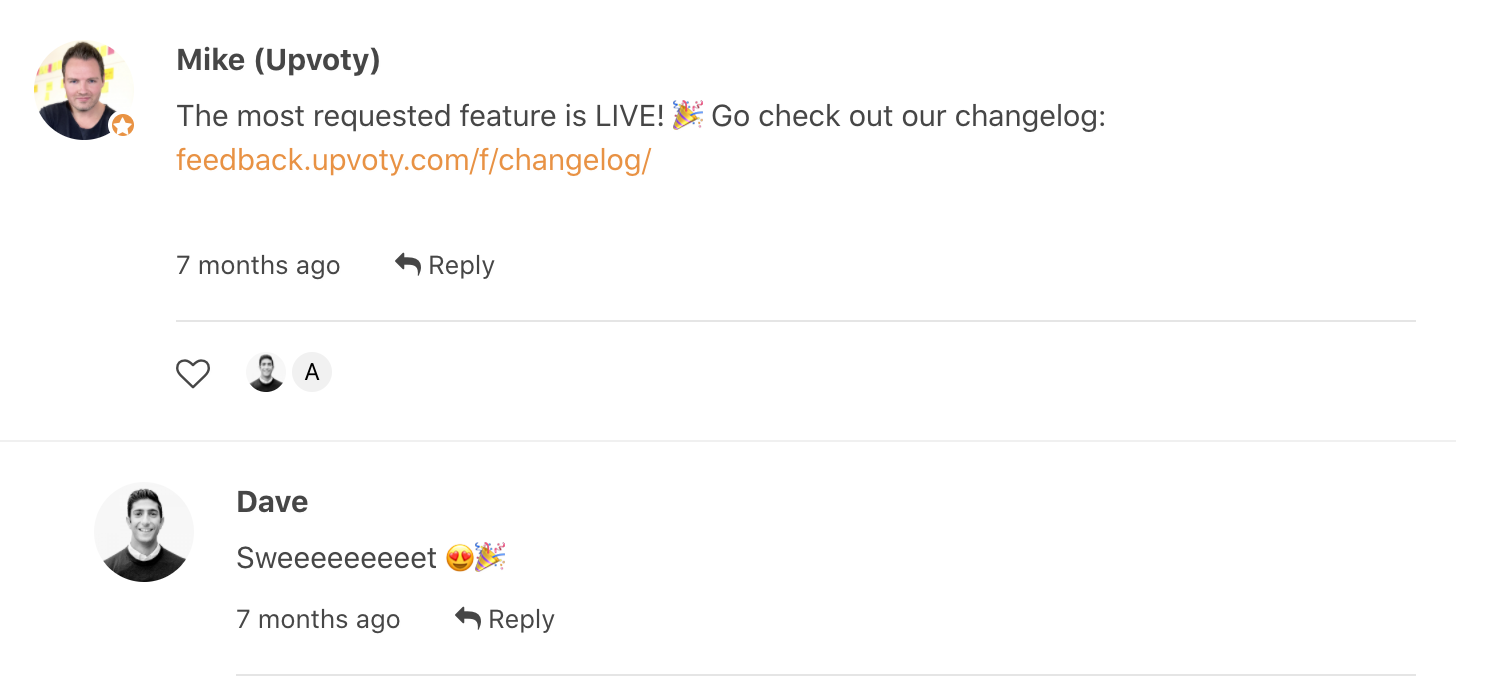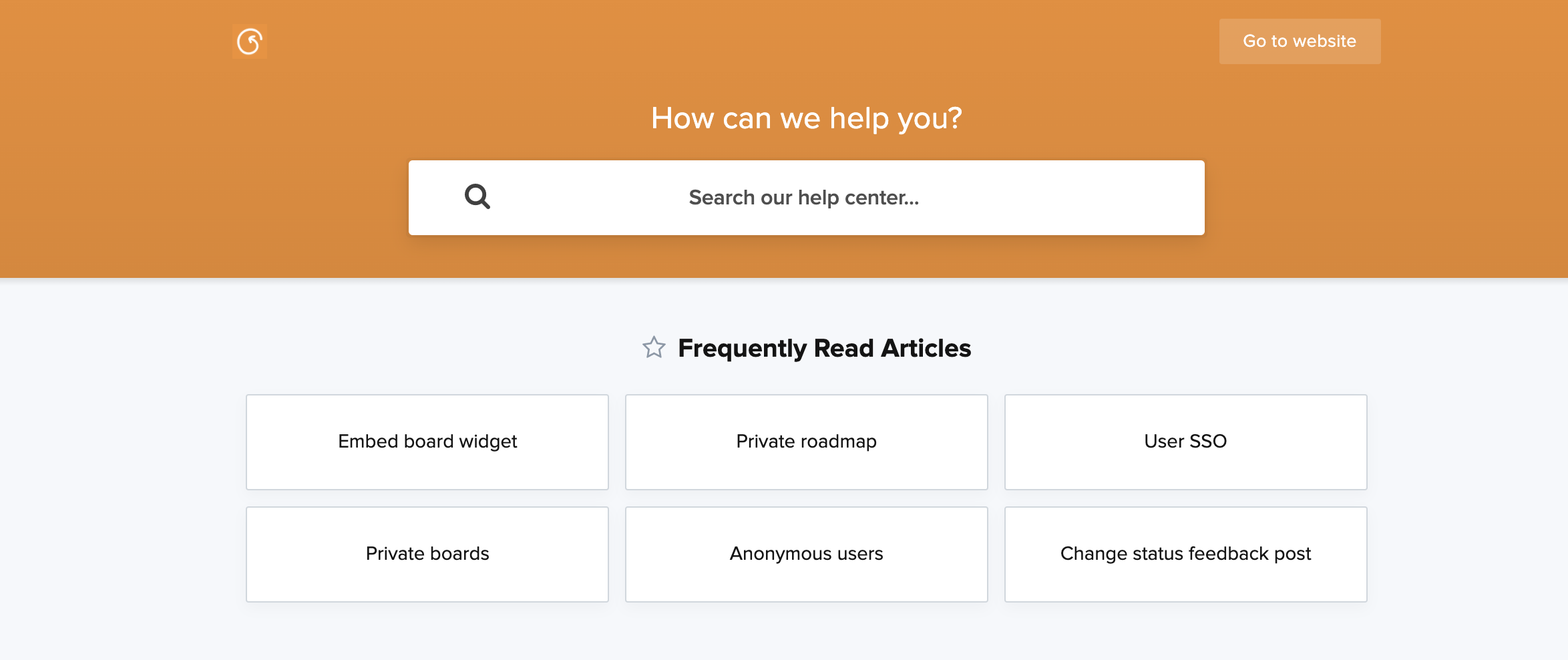Why and How to Keep Up Evaluating Your Product-Market Fit
Before you launch something, you need to determine the product-market fit in your industry. We bet you’ve heard this term before. And it’s true that you can’t create an impactful or revenue-generating business without completing this task.However, contrary to what you may think, assessing your product-market fit is not something you just do once and then forget about it. To succeed and keep up with the market, you must be proactive and evaluate your product-market fit periodically to make sure that you’re adding value and offering a product people want and need.But before moving forward with this idea, let’s see what product-market fit is and why it’s crucial to your business growth.
Understanding the Product-market fit
 According to a Hotjar SaaS Startup Guide, “You can think of product/market fit as sailing, where the product is the sail and demand is the wind. For the boat to work, you have to build a sail and find the wind to power it—so in less nautical terms, for your company to succeed you need to build a product whose value proposition satisfies the needs of a market and its potential customers.”As the guide indicates, “In principle, you can measure product/market fit with surveys that identify what percentage of your users think your new product is a ‘must-have.’ But more often than not, product/market fit is less about hypothetical numbers and percentages, and more about an in-depth and tangible understanding of who your customers are, and how they feel about you and your product.”HubSpot has a more straightforward definition: “Product-market fit occurs when a company’s value proposition, customers, and distribution channels align. It’s the perfect balance of all three pieces. If two of the three are aligned, you’ll probably enjoy some short-term success, but you’ll struggle to sustain it.”And although it may seem that determining the product-market fit is just a simple stage when building a business, more often than not, it requires constant monitoring. Otherwise, you won’t be able to keep up with the market.After all, the demands and needs of your customers may change. Your market may evolve. Or the problems people want to solve may become more complex. All these elements should be reevaluated and adjusted, meaning you’ll want to keep an eye on the product-market fit. Apart from that, there are some benefits that come with a consistent reevaluation of the product-market fit.Here are just some of them:
According to a Hotjar SaaS Startup Guide, “You can think of product/market fit as sailing, where the product is the sail and demand is the wind. For the boat to work, you have to build a sail and find the wind to power it—so in less nautical terms, for your company to succeed you need to build a product whose value proposition satisfies the needs of a market and its potential customers.”As the guide indicates, “In principle, you can measure product/market fit with surveys that identify what percentage of your users think your new product is a ‘must-have.’ But more often than not, product/market fit is less about hypothetical numbers and percentages, and more about an in-depth and tangible understanding of who your customers are, and how they feel about you and your product.”HubSpot has a more straightforward definition: “Product-market fit occurs when a company’s value proposition, customers, and distribution channels align. It’s the perfect balance of all three pieces. If two of the three are aligned, you’ll probably enjoy some short-term success, but you’ll struggle to sustain it.”And although it may seem that determining the product-market fit is just a simple stage when building a business, more often than not, it requires constant monitoring. Otherwise, you won’t be able to keep up with the market.After all, the demands and needs of your customers may change. Your market may evolve. Or the problems people want to solve may become more complex. All these elements should be reevaluated and adjusted, meaning you’ll want to keep an eye on the product-market fit. Apart from that, there are some benefits that come with a consistent reevaluation of the product-market fit.Here are just some of them:
Benefit 1: You’ll know, instead of just guessing
Should you add a new product feature? Should you simplify the dashboard? Should you adapt your product to more use cases? It’s easy to just guess and go with your “gut feeling,” thinking that product innovation and development happen behind closed doors.And although your product designers and developers may have great ideas that will amplify your brand, it’s always risky to invest resources into changing something without knowing if the market actually needs it.Continuously evaluating the product-market fit will give you better insights as to what needs to be modified or improved and help you be aware of people’s needs. Instead of guessing, you’ll know for a fact what your next steps should be.
Benefit 2: You’ll maintain a constant revenue
Is your product still relevant? Is the market still in need of the solution you’ve developed? Are people willing to pay to use your software? Not knowing the answers to these questions may reduce your agility. Additionally, you may become complacent and think that your product is the best on the market and people will always be willing to purchase it. A recurrent product-market fit evaluation, on the other hand, will give you the certainty that you’re on the right path, or conversely, will notify you that something needs to be changed immediately to continue to satisfy the needs of your target group.
Benefit 3: You’ll be able to pivot faster during a crisis
This year taught us that we can’t relax or take things for granted. Having witnessed how many industries and businesses have been affected by the COVID-19 outbreak, one can’t ignore the power of agile reaction. Let’s take the events industry, for example—one of the areas that got hit hard by the crisis. And we’re not just talking about the event organizers or venues, but also the event management technology companies.Most of them were offering digital solutions for running physical events, but since most of those events got canceled, that led to many startups with no business. However, a few of them managed to pivot and reorient their solutions and focus on the online events industry. This wouldn’t have been possible without constantly reevaluating the product-market fit and being up to date with the new needs people may have.
Benefit 4: You’ll get to know your industry and your stakeholders better
Being persistent with monitoring your product-market fit will help you keep in touch with your customers and product users, as well as provide you with the necessary insights to understand the depth of your industry. Thus, you’ll gain more knowledge, along with a stronger network that is willing to support your product and offer feedback.So as you can see, evaluating your product-market fit consistently will increase your growth and strengthen your product. So with that in mind, let’s list the steps you’ll want to take to ensure a consistent product-market fit evaluation for your company.
Step 1: Be proactive in collecting feedback from your users
 One of the things we’re most excited about at Upvoty is to give our customers the ability to read their users’ minds. What’s better than being able to know what your clients think about your product and how exactly you can improve it and add extra value to their experience? You see, evaluating the product-market fit shouldn’t be a difficult or expensive task.
One of the things we’re most excited about at Upvoty is to give our customers the ability to read their users’ minds. What’s better than being able to know what your clients think about your product and how exactly you can improve it and add extra value to their experience? You see, evaluating the product-market fit shouldn’t be a difficult or expensive task. You don’t need to hire researchers to conduct extensive market studies or run some focus groups (how outdated is that)? It’s actually an intuitive and easy-to-maintain process—you can simply set it up and forget about it. No market expert or researcher will provide you with better insights than your users themselves. All you need to do is have an outlet to collect their feedback seamlessly. And we can help you with that.
You don’t need to hire researchers to conduct extensive market studies or run some focus groups (how outdated is that)? It’s actually an intuitive and easy-to-maintain process—you can simply set it up and forget about it. No market expert or researcher will provide you with better insights than your users themselves. All you need to do is have an outlet to collect their feedback seamlessly. And we can help you with that.
Step 2: Prioritize the insights you’re collecting from your clients
Another important aspect when evaluating the product-market fit on a constant basis is knowing how to rank or grade your users’ feedback. Some people may ask you to add niche features to your product that will help them specifically but won’t be valuable to other users.Other clients may ask you to build complicated features that will require a few months of work, yet won’t give you a big return on investment. That’s why you’ll want to create a special framework that will help you prioritize everyone’s feedback.For example, there’s the value-complexity matrix, based on “categorizing potential new features by their expected business value and implementation complexity.”This framework refers to monitoring the work and effort your team will need to put into developing a new feature, for example, and the value you’ll be able to capture afterward. You may want to spend time on those tasks that are of high value and high complexity. And on the flip side, you may want to delay those tasks that are of high complexity, yet low value.
Step 3: MVP your new big features or updates
To start a SaaS business the right way, you’ll need a minimum viable product (MVP). That’s something that protects you from failure and investing too much money and time into a product that won’t bring you any revenue. You start with a small product prototype to test your potential users and see if your idea works.So why not apply the same concept to your new big features or product updates? Instead of wasting time on launching something big, create a smaller group of active users, launch a feature prototype, and ask people for feedback. Maybe they’ll love it, maybe they’ll hate it. But this quick product-market fit evaluation strategy will help you know how to proceed.
Step 4: Know whom you’re asking for feedback
According to the Hotjar SaaS Startup Guide, “Usage frequency affects the value of someone’s feedback: feedback from customers who rarely use your SaaS can be weighted differently from those who use it daily. The type of user—free vs. lead vs. paying—also affects their feedback value to your business.”That’s why it’s important to look at the piece of feedback or feature request and know who the source is. Is it from someone who’s paying for the solution and using your software a lot, or is it from someone who isn’t very active on the platform? Hotjar suggests, “If you have a mix of users, record their feedback separately, as free user requests might skew your commercial priorities.”
Step 5: Ask your sales and customer success teams to log the most frequent questions
Your sales and customer success teams are always interacting with your target audience and your customers. This means that they have access to an immense pool of information as to what your leads or users may want or need. However, all this information gets lost in the haste of the day, and neither you nor your product or marketing teams have access to these insights. To keep this from happening and to engage in a recurrent product-market fit evaluation, ask your sales and customer success teams to keep a log with people’s most frequent questions or concerns. This will be an incredible source for growth and product-market alignment.
However, all this information gets lost in the haste of the day, and neither you nor your product or marketing teams have access to these insights. To keep this from happening and to engage in a recurrent product-market fit evaluation, ask your sales and customer success teams to keep a log with people’s most frequent questions or concerns. This will be an incredible source for growth and product-market alignment.
Transform data into knowledge and actionable insights
Generating market and user insights that will help you improve and grow your product is the main reason why you shouldn’t treat product-market fit evaluation as a one-time event. It’s an ongoing process you’ll want to integrate into your startup workflow:
- Be proactive and encourage people to leave their feedback about your platform. Upvoty can help by streamlining your entire feedback collection process. You just set it up and forget about it.
- Next, you’ll want to prioritize the insights you’re collecting and decide which ones will transform into actions and next updates.
- Before launching a big feature, use the MVP strategy and release a prototype to see if it works or not.
- Also, know whom you’re asking for feedback, as the status of the user is very important.
- Finally, encourage your sales and customer success teams to log the most frequent questions they get from leads and users.
All these actions will help you integrate the product-market fit evaluation into your company identity and gain agility.

